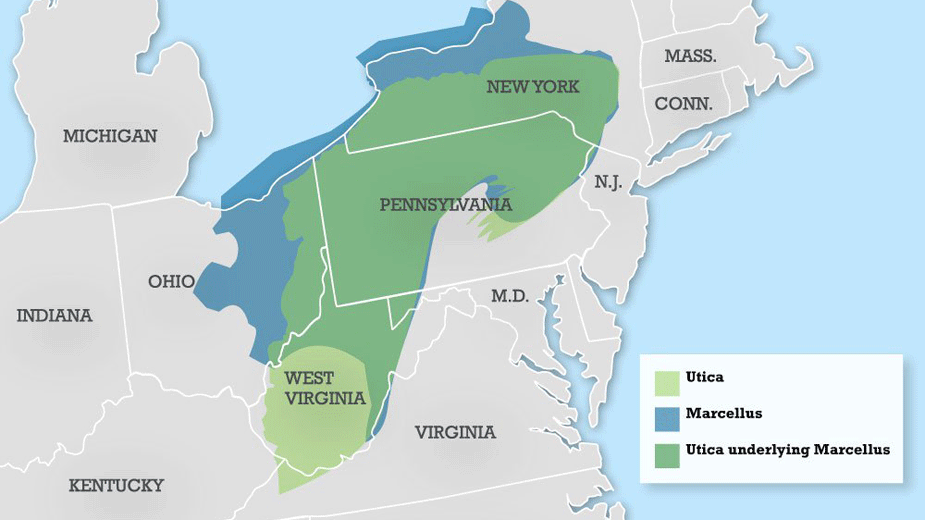Industry Group Touts Assets in Energy-Rich Ohio
YOUNGSTOWN, Ohio – An energy advocacy group says that Ohio is in a prime position to lure extensive manufacturing interests because of its assets such as the Utica shale, which has helped drive down natural gas prices and reduced the cost of doing business in the state.
“If you look at just Ohio, Pennsylvania and West Virginia — if they were their own separate country – it would be the third-largest producer of natural gas in the world,” Chris Ventura, executive vice president of the Consumer Energy Alliance’s Midwest region, said Tuesday. “Ten years ago, we were producing hardly anything here.”
The Consumer Energy Alliance is a trade group that boasts nearly 300 members nationwide, encompassing large corporate end users, producers and infrastructure companies. It has some 450,000 grassroots members, that is, individual consumers or small-business owners who are concerned about energy issues, he added. The mission of the organization is to promote sound energy policies that embrace all aspects of the industry, which include fossil fuels (coal, natural gas and oil), nuclear power, and renewable sources such as wind and solar.
Recently, Consumer Energy Alliance launched its “Campaign for America’s Energy,” a program designed to bring attention to the benefits of energy delivery and development across Ohio, Pennsylvania and West Virginia.
Natural gas extracted from eastern Ohio’s Utica shale, and the Marcellus shale in Pennsylvania and West Virginia, has changed the dynamics of not just energy production in the region, but the prospects of attracting larger end users that are interested in cutting production costs or using the resource for fuel and feedstock as well, Ventura said.
In 2008, natural gas prices in Ohio hovered between $12 and $13 per thousand cubic feet of gas, Ventura pointed out. By 2018, those prices had plummeted to $2.80 per Mcf, thanks to extensive drilling and production programs from energy companies that began staking positions in the Utica eight years ago.
According to the Ohio Department of Natural Resources, 2,254 horizontal wells have been drilled in eastern Ohio’s Utica shale since 2010. The agency reports that 1,806 of these wells are in production.
In 2016, wells within Ohio produced 1.388 trillion cubic feet of natural gas, and production has since trended upward, according to ODNR. The latest data show that natural gas production stood at 360.6 billion cubic feet during the third quarter of 2017 – 45.7% higher than the same period in 2016.
In 2011, Ohio’s horizontal wells produced just 2.5 billion cubic feet of natural gas, according to ODNR.
“It’s made a huge difference when it comes to enticing manufacturers to come and set up shop,” Ventura said, referring to local investments such as Vallourec’s decision in 2010 to construct a $1 billion pipe mill in Youngstown.
 Chris Ventura, executive vice president of the Consumer Energy Alliance’s Midwest region, met with The Business Journal Tuesday.
Chris Ventura, executive vice president of the Consumer Energy Alliance’s Midwest region, met with The Business Journal Tuesday.
Other investments include five electrical generation plants in the region that use natural gas as a fuel, plants either announced, under development, or up and running.
Clean Energy Future-Lordstown’s $900 million natural gas-fueled electrical generation plant, under construction in that village, was drawn to this region because of the abundance of natural gas found in the Utica.
A second similar plant at the site is under consideration while a third Ohio power plant spearheaded by Advanced Power near Wellsville in Columbiana County is lining up financing and awaiting regulatory approval to move forward. Construction on a fourth plant owned by Tyr Energy in neighboring Lawrence County, Pa., started late last summer.
Meanwhile, Advanced Power announced that its Carroll County Energy plant has started operations near Carrollton.
Although natural gas-fueled power plants might be good for Ohio, they’re not necessarily practical in other states, Ventura noted. “It is actually unprofitable to build a natural gas-fired power plant in California because of the market distortions their state policymakers have put in place,” he said.
Still, other development projects across Ohio — ones not normally be associated with the oil and gas industry — have materialized because of access to low-cost energy, Ventura said.
He notes that Cliffs Natural Resources, the giant Great Lakes ore supplier, has announced it would construct a new processing plant near Toledo. “This is their first one in Ohio in generations,” Ventura noted. “Toledo had access to new pipeline capacity to ensure that natural gas is available. And they have two new power plants going up that are fueled by natural gas.”
Other companies have selected Ohio as a site in part because of the low cost of energy available throughout the state, Ventura said, not just in the shale region. In Circleville, just south of Columbus, for example, the Italian tissue paper manufacturer Sofidel is constructing a new plant – the company’s second in the United States.
“Paper manufacturing is an energy-intensive process,” he said. “We’ve just scratched the surface when it comes to opportunities for end users here.”
The region’s workforce is another asset attractive to manufacturers outside the area, Ventura remarked.
Royal Dutch Shell’s decision to build its $6 billion ethane cracker plant on the Ohio River near Monaca, Pa., he said, was predominantly based on three factors: the abundance of natural gas in the Utica and Marcellus, an extensive multi-modal transportation network and a skilled workforce. “The pre-construction phase needed 1,200 tradesmen,” he said of the project.
Other shale oil and gas regions in the country, such as the Bakken shale in North Dakota, simply do not have a workforce this strong, Ventura noted.
A critical issue Ohio faces is the development of new energy infrastructure to accommodate growing production and consumption, Ventura said. This isn’t confined to pipeline networks, but includes transmission lines that connect new natural gas-fired plants to the electrical grid, he said.
While new pipeline projects have come online and the climate has improved, others have been met with public opposition and stalled, Ventura said. Choking off supply could translate into higher utility bills for commercial and residential consumers in the future.
One reason why natural gas prices skyrocketed in New England in December during the bitter cold, Ventura continued, is the lack of transmission pipelines to supply end-users. “It’s all because of decisions policy makers made to constrain pipeline capacity and energy transmission in the region,” he said.
Ventura noted that Ohio’s energy policy is adapting well to the changes the Utica brought.
“We’ve made vast improvements,” he said. “That has set the stage to allow for the production of energy on the traditional side and the alternative side.”
Pictured above: Graphic courtesy Marcellus Shale Coalition.
Copyright 2024 The Business Journal, Youngstown, Ohio.



